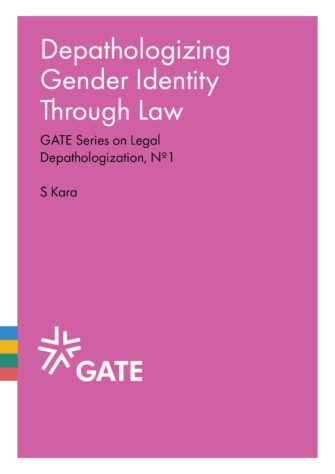Trans and gender diverse people have not only been pathologized by psycho-medical institutions and their classifications but also by the laws and policies governing our lives. Around the world, legal systems have adopted pathologizing approaches to differentiate between “proper” and “improper” subjects of human rights and to condition, restrict or even deny access to those rights. One of the key goals of depathologizing trans and gender diverse people is to stop the justification of systemic legal cissexism in psycho-medical roots. However, as this report shows, processes of legal depathologization can also be possible.
Legal depathologization refers to the removal, through legislative change, judicial decision or executive order, of certain legal or policy provisions that treat trans people as inherently unwell or disordered on the basis of their gender identity, including, forced or coerced psycho-medical assessment and/or diagnoses, psychotherapy, hormonal and surgical processes, and sterilization. Legal depathologization can also refer to the adoption of laws that explicitly prohibit trans pathologization or provide for legal gender recognition and/or gender affirming care without pathologizing requirements.
Purpose of the Publication
This paper intends to show that depathologizing gender identity through law is a valid and achievable goal and provides examples of legal depathologization of gender identity at the national level. It seeks to lay out the various paths to legal depathologization that have found success in different countries, as well as to examine the ongoing efforts and challenges faced in some States by lawmakers and advocates for trans equality. Ultimately, it seeks to inform domestic processes for legal depathologization and catalyze the realization of human rights and fundamental freedoms of trans and gender diverse people.
Conclusions
While the ICD-11 is expected to take some time to roll out worldwide, States can lead by example, and move ahead with depathologization of gender identity at the national level. Through consultative processes with relevant stakeholders, law and policymakers can gain a deeper understanding of how discriminatory classifications affect trans people.
The case studies outlined in this paper provide examples of how States can amend laws, policies and practices that treat trans people as ill or disordered, through recognizing their autonomy and self-identification. Good practice allows for simple, accessible and fast administrative procedures for name and gender change, without abusive requirements such as forced medical diagnosis or treatment.






